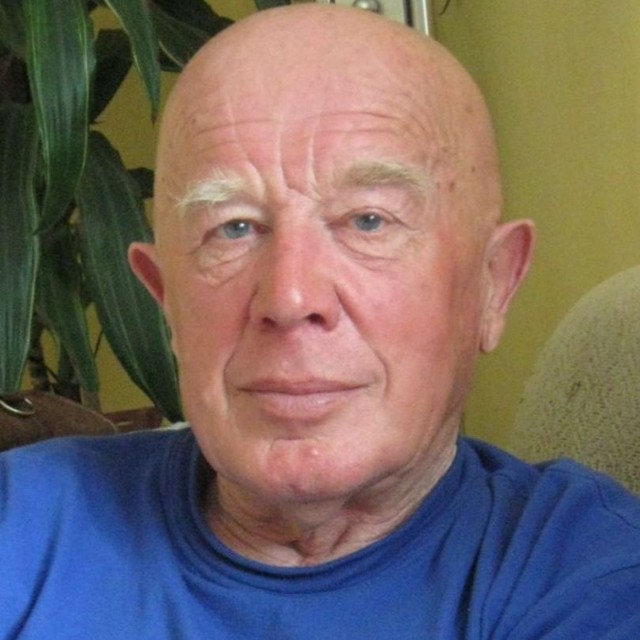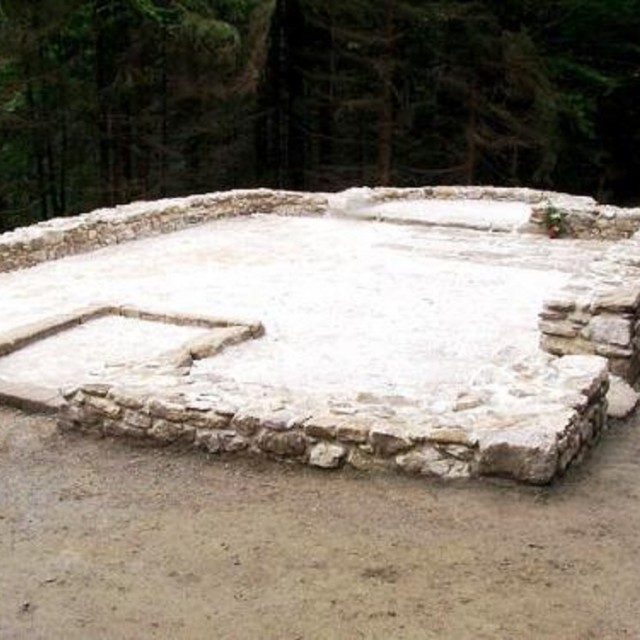The Lourdes of Šumava
In 1957, Emil Kintzl was sent to Srní as a teacher. Srní is located in the vicinity of the former Hauswald pilgrimage chapel. Emil Kintzl thus witnessed how the soldiers placed mines in the chapel – which was located in the military zone of Dobrá voda (Good Water) – and blasted it in September 1957. "In September 1957, we suddenly heard a big bang. Later we learned that the soldiers had blown up the Hauswald Chapel. In 1946, when the Germans were being displaced, they brought all their holy items to the chapel because they weren’t allowed to take them with them, nor could they leave them behind in their houses. So they put them in the chapel, which was close to them. Then, in the 1950s, when people began to flee to the West, it was suspected that the traffickers placed so-called ‘dead boxes’ in the chapel for exchanging messages. Although it was already located in the military area, the soldiers blew the chapel up on the basis of this rumor. Mr. Březina, a sexton from Srní, went there and dug up an intact statue of Our Lady of Lourdes, because there was miraculous water there and it was called the Lourdes of Šumava. It was a miracle! The statue is in a church in Srní until today. That’s the kind of atrocities they did there. Even churches and cemeteries weren’t left in peace. Everything was done in the name of atheism. Although they didn’t believe, they were terribly afraid of faith. At that time, there were fifty cottages in the nearby village of Zelená Hora (Green Mountain). They let them fall into disrepair and the whole region subsequently became desolated“.
Hodnocení
Abyste mohli hodnotit musíte se přihlásit!
Útvonalak
Még nem tartozik egyetlen útvonalhoz sem.
Hozzászólások

Emil Kintzl
Emil Kintzl was born on 23 February 1934 in Prague, Nusle. After the Nazi occupation of Czechoslovakia in 1939 his family moved to Sušice. Here, he spent a large part of his childhood and experienced a number of war-related adventures. In May 1945, he witnessed the liberation of Sušice by the U.S. Army and this experience has deeply influenced him. After the war he became an avid Boy Scout and during the holidays of 1948 he participated in the last summer camp before the Boy Scouts were abolished. The last summer camp took place in dramatic circumstances in the environment of former German villages and settlements whose inhabitants had been driven out just a couple of years before. He witnessed some of the Boy Scout chiefs crossing the state border and leaving the republic right after the end of the camp. He also recalls the persecution of Sokol officials, small businessmen and farmers who refused to join the collective farm system. He also remembers the onset of the Communist Union of Youth, which he never entered. After graduation he started to study geometry but the arrogance of the young members of the Union and the tainted relationships in general at the university so disgusted him that he left the studies and made a living by delivering coal. An important moment in his life was the encounter with a favorite professor, who persuaded him to become a teacher as well. He became a teacher at a school in Hartmanice while studying remotely in Pilsen. He remembers the distinctive local community of Romanian Slovaks and Ukrainians. After returning from military service he found his place at the school occupied. He therefore went to teach to Srní and then to Kašperské Hory. He remembers the brutal devastation of the region, the destruction of entire villages located in the former military zone and their subsequent leveling with the ground, the looting and destruction of churches, chapels and cemeteries. In August 1968, he became involved in a tragicomic situation when - after visiting the German town of Zittau - he found himself in German internment for a week (as a result of the occupation of Czechoslovakia by Warsaw Pact armies and the closing down of borders). His continuous conflict with the regime resulted in his being fired from the school in 1975. He then spent fourteen years in the boiler room of a local company as a stoker, and his children were prevented from studying. He remains faithful to Kašperské hory, as well as to his lifelong hobbies - scouting, hiking, sports and especially skiing. He has developed an interest in the history of the region and is the author of two books on this topic.



